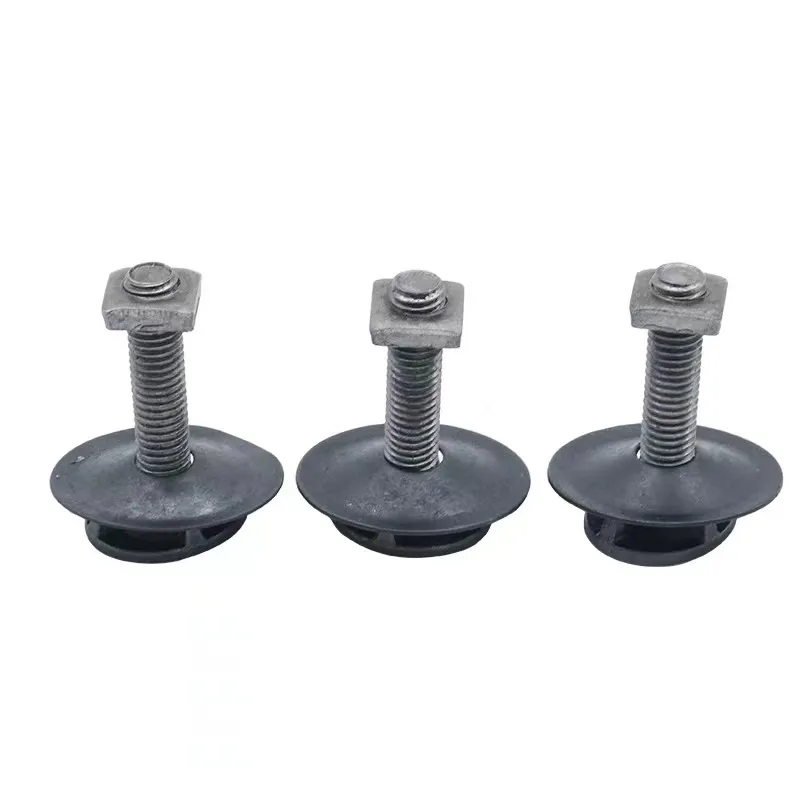

M6 Flange Nut - Durable and Reliable Fastening Solutions
Sep . 11, 2024 06:53 Back to list
M6 Flange Nut - Durable and Reliable Fastening Solutions
Understanding the M6 Flange Nut A Key Component in Fastening Technology
When it comes to mechanical assemblies and engineering applications, the importance of reliable fastening components cannot be overstated. Among these components, the M6 flange nut stands out as an essential part that plays a critical role in ensuring the stability and longevity of assembled structures. This article delves into the features, applications, and advantages of the M6 flange nut.
What is an M6 Flange Nut?
An M6 flange nut is a type of hexagonal nut that incorporates a flat, wide circular flange at one end. This flange acts as a bearing surface, which helps distribute the load more evenly across the surface of the attached material. The “M6” designation refers to the metric nominal diameter of the nut, which is 6 millimeters. These nuts are commonly made from various materials, including stainless steel, carbon steel, and nylon, each offering different benefits such as corrosion resistance, strength, and lightweight properties.
Key Features
One of the primary features of the M6 flange nut is its unique design. The flange allows for the nut to be securely locked in place, reducing the likelihood of loosening due to vibrations, an important factor in machinery and structural applications. This design enhances the overall integrity of the assembly, especially in environments where movement is constant.
Additionally, the flange nut often incorporates serrations on the underside of the flange. These serrations bite into the surface of the material it is fastening, providing increased friction and further preventing loosening over time. This feature is particularly beneficial in applications involving vibrations, such as automotive or heavy machinery assembly.
m6 flange nut

Applications
M6 flange nuts are widely used in various industries, including automotive, manufacturing, and construction. They are ideal for securing components in assembly lines, machinery, and furniture. For instance, in automotive applications, M6 flange nuts are frequently used to attach engine components, where robust fastening is crucial for the safety and performance of the vehicle.
In the construction sector, these nuts are often utilized in structural steel frames, providing the necessary strength for supporting heavy loads. Their capacity to endure harsh conditions makes them suitable for outdoor construction projects as well.
Advantages
The primary advantages of using M6 flange nuts include their enhanced grip and excellent load distribution properties. The flange design minimizes the risk of damage to the surface materials, which can be a common issue with standard nuts. Additionally, their ability to resist loosening due to vibration ensures long-term reliability, reducing maintenance and replacement costs.
In conclusion, the M6 flange nut is a vital fastening component that ensures mechanical stability in a myriad of applications. Its unique design and robust characteristics make it an excellent choice for engineers and manufacturers seeking reliable and effective fastening solutions. Whether in automotive engineering or construction, the M6 flange nut is undoubtedly a cornerstone of modern assembly technology.
Latest news
-
Hot Dip Galvanized Bolts-About LongZe|High Strength, Corrosion Resistance
NewsJul.30,2025
-
High-Strength Hot Dip Galvanized Bolts - Hebei Longze | Corrosion Resistance, Customization
NewsJul.30,2025
-
Hot Dip Galvanized Bolts-Hebei Longze|Corrosion Resistance&High Strength
NewsJul.30,2025
-
High-Strength Hot-Dip Galvanized Bolts-Hebei Longze|Corrosion Resistance&High Strength
NewsJul.30,2025
-
Hot Dip Galvanized Bolts-Hebei Longze|Corrosion Resistance&High Strength
NewsJul.30,2025
-
Hot Dip Galvanized Bolts - Hebei Longze | Corrosion Resistance, High Strength
NewsJul.30,2025

